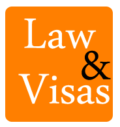If you’re immigrating to the United States and face a finding of “inadmissibility,” it can be a major setback in your immigration process. Being deemed inadmissible could prevent you from applying for a green card or re-entering the U.S. if you leave. However, you may be able to overcome this issue by applying for a waiver of inadmissibility.
What Is a Waiver of Inadmissibility?
Inadmissibility refers to a situation where you are not allowed to enter or stay in the U.S. due to certain violations, such as criminal activity, immigration fraud, or unlawful presence in the U.S. Under U.S. immigration law, specific grounds of inadmissibility are laid out by the Immigration and Nationality Act (INA), and these can include issues like health, security concerns, criminal history, fraud, or illegal presence in the U.S.
If you are found inadmissible during the immigration process, you can apply for a waiver using Form I-601 or Form I-601A. These forms provide a pathway to continue your immigration journey, though the process is long and the approval is not guaranteed.
Which Form Should You Use?
Form I-601:
- When to use: If you’re outside the U.S. and have been found inadmissible during a visa interview, or if you’re applying for certain other immigration benefits such as Adjustment of Status.
- Cost: $1,050.
Form I-601A:
- When to use: If you’re in the U.S. and you have an immediate relative who is a U.S. citizen or a permanent resident, and you’ve overstayed a visa or entered the U.S. illegally. Form I-601A is used to request a waiver of the 3- or 10-year bar from re-entering the U.S. when you leave to apply for a green card.
- Cost: $795.
Requirements for a Waiver
The eligibility for each waiver form varies depending on your specific situation. Here’s a breakdown of each form’s requirements:
Form I-601
- Who can apply:
- Applicants for immigrant visas or K or V visas (outside the U.S.) who have been found inadmissible.
- Applicants adjusting status to lawful permanent residency (some categories excluded).
- Applicants for Temporary Protected Status (TPS).
- Applicants for Special Immigrant Juvenile Status or other specific categories.
- Inadmissibility grounds: The INA provides a broad list of reasons for inadmissibility, and applicants may only request waivers for certain grounds based on their visa type.
Form I-601A
- Who can apply:
- Individuals in the U.S. at the time of application.
- You must be at least 17 years old and have a pending immigrant visa case with the U.S. Department of State.
- Applicants seeking a waiver of the 3- or 10-year ban for overstaying a visa or entering the U.S. unlawfully.
- Key criteria: Your U.S. citizen or green card holder spouse or parent must experience extreme hardship if the waiver is denied.
How to Apply for a Waiver of Inadmissibility
The application process for a waiver varies between Form I-601 and Form I-601A. Here’s a step-by-step breakdown of both:
Form I-601 Application Process
- Determine eligibility: If you are outside the U.S. and a consular officer deems you inadmissible, you can apply for a waiver.
- Submit the form: You must file Form I-601 (and possibly Form I-212 if you were deported) with USCIS.
- Provide evidence: You must include supporting documentation and evidence with your application. The process can take between 31.5 and 34 months on average.
- Decision and appeal: If denied, you may appeal the decision or file a motion to reconsider (Form I-290B).
- Waiver validity: Most waivers are permanent, but if your waiver is conditional or temporary, be sure to check the instructions for additional information.
Form I-601A Application Process
- Eligibility check: You must be in the U.S. at the time of application and have a pending immigrant visa case.
- Submit the form: File Form I-601A either online or by mail. You will need to appear for a biometrics appointment for fingerprinting, photos, and other security checks.
- Prove hardship: You must demonstrate that your U.S. citizen or permanent resident spouse or parent would face extreme hardship if you are unable to re-enter the U.S.
- Approval and next steps: If your waiver is approved, you can leave the U.S., apply for your green card at a U.S. embassy, and submit the waiver with your application to prove you are not subject to the 3- or 10-year re-entry ban.
- Processing time: The average processing time is 8.5 to 11.5 months.
USCIS Fee Changes
Be aware that the filing fees for Form I-601 and Form I-601A may increase shortly, so it’s important to submit your application as soon as you can to avoid higher costs.
What types of evidence are typically required for a waiver application
When applying for a waiver of inadmissibility to the U.S., the evidence required can vary based on the specific grounds for inadmissibility and the type of waiver being sought. Here are the typical types of evidence that may be required:
Proof of Relationship:
If your waiver is based on a qualifying family relationship, you must provide evidence such as marriage certificates, birth certificates, or adoption records to establish this relationship.
Documentation of Inadmissibility:
You will need to submit official court records for any criminal convictions, including details about the plea, indictment, conviction, and disposition. This is crucial if your inadmissibility stems from criminal history.
Personal Statements:
A signed personal statement explaining the circumstances surrounding any arrests or convictions can be beneficial. This statement should detail your perspective and any mitigating factors.
Evidence of Rehabilitation:
Documentation showing efforts towards rehabilitation, such as completion of counseling programs, evidence of current employment, community service records, or other relevant activities that demonstrate positive changes in behavior.
Extreme Hardship Evidence:
For waivers based on extreme hardship to a qualifying relative, you must provide specific evidence that illustrates how denial of the waiver would cause significant hardship to that relative. This could include financial documents, medical records, or psychological evaluations.
Credible Supporting Documents:
All evidence submitted should be credible and specific to your case. If certain documents are unavailable, you should provide a reasonable explanation for their absence.
Additional Evidence as Required:
Depending on individual circumstances, additional evidence may be requested or necessary to support your claims effectively.
Are there specific documents required for family relationship waivers
When applying for a family relationship waiver, specifically through Form I-601 or I-601A, certain documents are required to establish the qualifying relationship and support your claim. Here’s a list of specific documents that are typically needed:
Required Documents for Family Relationship Waivers
Proof of Qualifying Relative’s Status:
A copy of the qualifying relative’s U.S. citizenship or permanent resident status, which can include:
- Birth certificate (showing U.S. birth)
- U.S. passport
- Green card
- Naturalization certificate
Affidavits:
A signed and notarized affidavit from the qualifying relative detailing:
- How you met
- The nature of your relationship
- The hardship they would experience if the waiver is not granted
- A similar affidavit from you confirming the details provided by your qualifying relative.
Birth Certificates:
Certified copies of your birth certificate and, if applicable, those of your children and parents.
Marriage Certificate:
If married, a certified copy of your marriage certificate is required.
Financial Evidence:
Letters from accountants or financial advisors detailing any financial hardship that the qualifying relative would face if you were removed from the U.S.
Medical Documentation:
Letters from doctors explaining any serious medical conditions affecting the qualifying relative.
Photographs:
- Passport-sized photos of both you and your qualifying relative.
- Additional photographs together at social events to demonstrate the authenticity of your relationship.
Proof of Previous Marriages (if applicable):
Copies of divorce decrees or death certificates to establish the legitimacy of your current marriage.
Additional Supporting Evidence:
- Character references from community members attest to your good character.
- Documentation proving adverse conditions in your home country, if relevant.
Translations:
Any documents not in English should be accompanied by certified translations.
Applying for a waiver of inadmissibility can be complex, but it offers a possible solution to overcoming barriers that might prevent you from entering or staying in the U.S. If you’re facing inadmissibility, it’s essential to carefully follow the instructions for the appropriate form, submit all required documentation, and be prepared for a lengthy process.
How Law and Visas Can Help?
At Law and Visas, our team of expert immigration consultants is here to make your travel straightforward and successful. Whether you’re applying for a B-1 Visa Waiver or a J-1 Visa Waiver, we handle every step—from preparing your application to gathering the required documents.
Our Immigration Consultants and Lawyers ensure that your application meets the highest standards, with no details missed. We’ll also keep you informed throughout the process and coordinate with the immigration office or embassy on your behalf.
Law and Visas have a strong record of helping clients secure the visas/permits they need for International travel. You can call us today at +234 812 5505 986 to learn how we can help you.





